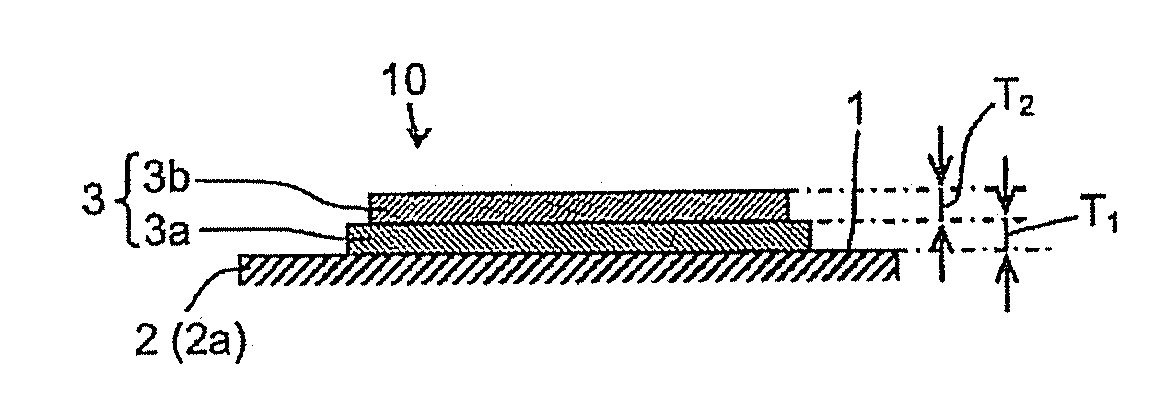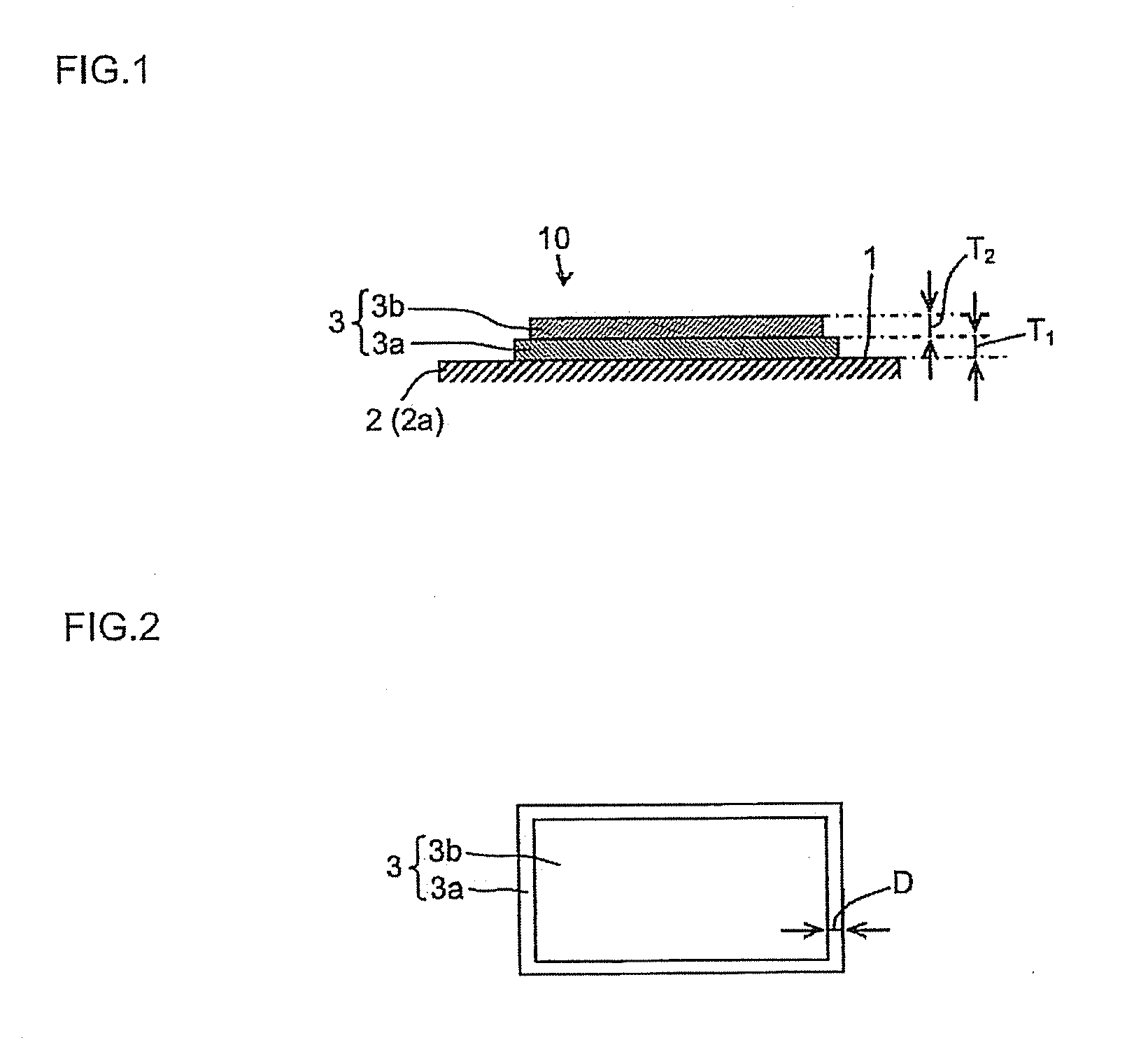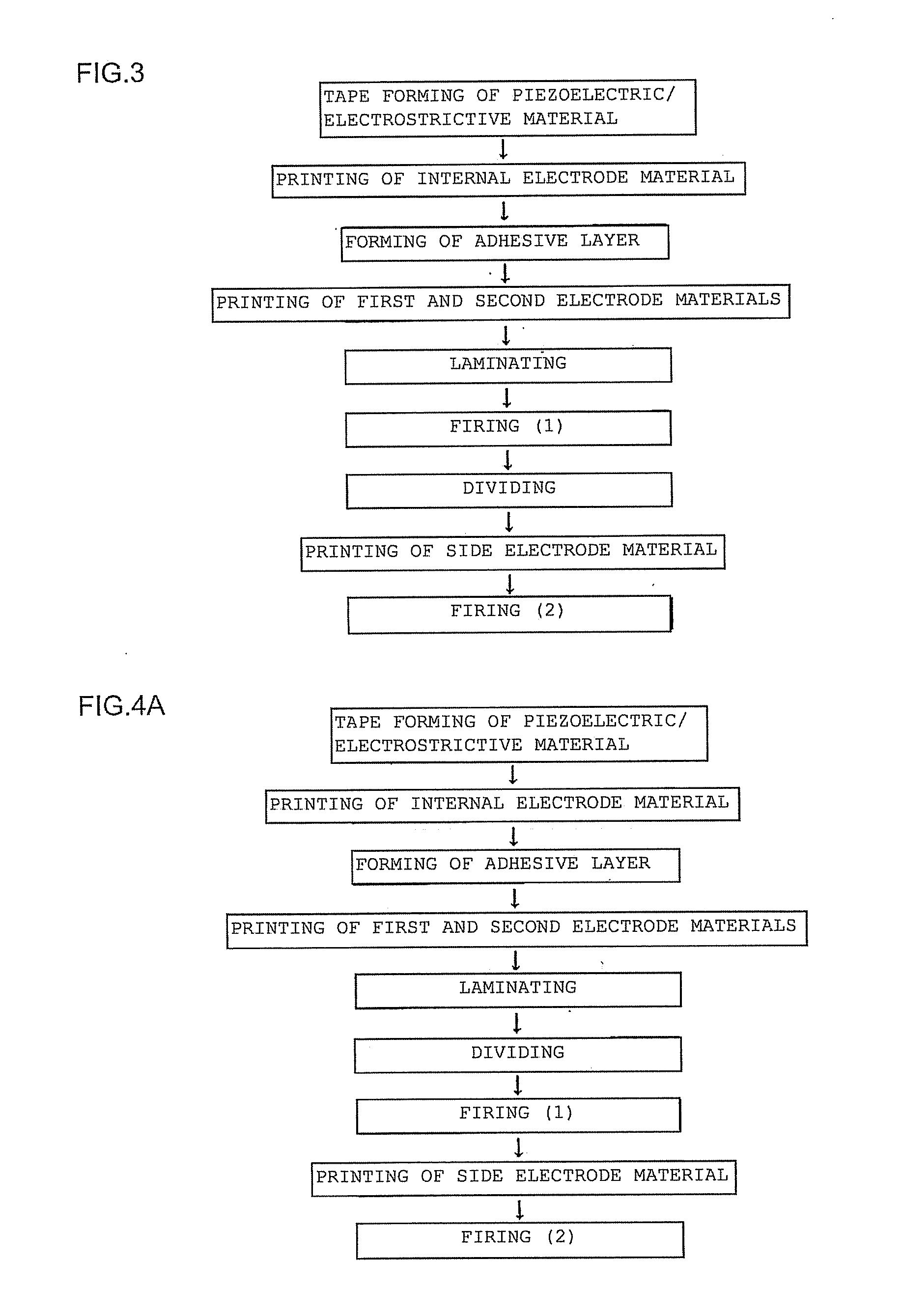Piezoelectric/electrostrictive element and method for manufacturing thereof
- Summary
- Abstract
- Description
- Claims
- Application Information
AI Technical Summary
Benefits of technology
Problems solved by technology
Method used
Image
Examples
examples
[0104]Hereinafter, the present invention will specifically be described with respect to examples, but the present invention is not limited to these examples.
[0105](Manufacturing of Piezoelectric / Electrostrictive Porcelain Composition)
[0106]Materials, i.e., 68.5 mass % of PbO, 11.7 mass % of TiO2, 17.5 mass % of ZrO2, 0.90 mass % of Sb2O3, 0.82 mass % of Nb2O5 and 0.60 mass % of MnCO3 in terms of MnO2 were weighed, and mixed with the predetermined amount of water for 24 hours by a ball mill to obtain a prepared slurry. The resultant prepared slurry was placed in a hot-air drier to evaporate the water, followed by drying, to obtain the mixed material. The resultant mixed material was placed in a sheath made of magnesia, the sheath was closed with a cover made of magnesia, and the material was heated and calcinated at 1000° C. in an electric furnace to obtain a calcinated material. The resultant calcinated material was ground with the predetermined amount of the water by the ball mill ...
reference examples 1 to 18
[0109]A piezoelectric / electrostrictive porcelain composition, a dispersant, a plasticizer and a solvent were mixed to prepare a slurry, and tape forming was performed by a doctor blade method, to prepare a green sheet. It is to be noted that the thickness of the prepared green sheet was designed so that the thickness thereof became 36 μm after firing. On the green sheet, a pasted electrode material containing a metal component shown in Table 1 (Ag—Pd coprecipitation powder prepared by a coprecipitation method, Ag—Pd allow powder or Pt) was printed in a predetermined shape by a screen printing method. It is to be noted that the electrode material was printed so that the thickness thereof became 1.5 μm after the firing. Furthermore, on the electrode material, an adhesive layer was printed so that the thickness thereof became 2.0 μm after the firing.
[0110]The printed green sheets for 30 layers were laminated and thermo compression bonded to prepare a laminated substrate including 100 (...
example 1
[0112]A piezoelectric / electrostrictive porcelain composition, a dispersant, a plasticizer and a solvent were mixed to prepare a slurry, and tape forming was performed by a doctor blade method, to prepare a green sheet. On the green sheet, a pasted first electrode material containing 97 mass % of Ag—Pd alloy powder (Ag:Pd=7:3 (mass ratio)) and 3 mass % of piezoelectric / electrostrictive porcelain composition (with the proviso that the total of Ag—Pd alloy powder and the piezoelectric / electrostrictive porcelain composition=100 mass %) was printed in a predetermined shape by a screen printing method. It is to be noted that the first electrode material was printed so that a thickness T1 (see FIG. 1) of the formed first electrode layer was 5.0 μm after the firing. Next, on the printed first electrode material, a pasted second electrode material containing Ag—Pd alloy powder (Ag:Pd=7:3 (mass ratio)) was printed in a predetermined shape by the screen printing method. It is to be noted that ...
PUM
| Property | Measurement | Unit |
|---|---|---|
| Percent by mass | aaaaa | aaaaa |
| Percent by mass | aaaaa | aaaaa |
| Percent by mass | aaaaa | aaaaa |
Abstract
Description
Claims
Application Information
 Login to View More
Login to View More - R&D
- Intellectual Property
- Life Sciences
- Materials
- Tech Scout
- Unparalleled Data Quality
- Higher Quality Content
- 60% Fewer Hallucinations
Browse by: Latest US Patents, China's latest patents, Technical Efficacy Thesaurus, Application Domain, Technology Topic, Popular Technical Reports.
© 2025 PatSnap. All rights reserved.Legal|Privacy policy|Modern Slavery Act Transparency Statement|Sitemap|About US| Contact US: help@patsnap.com



